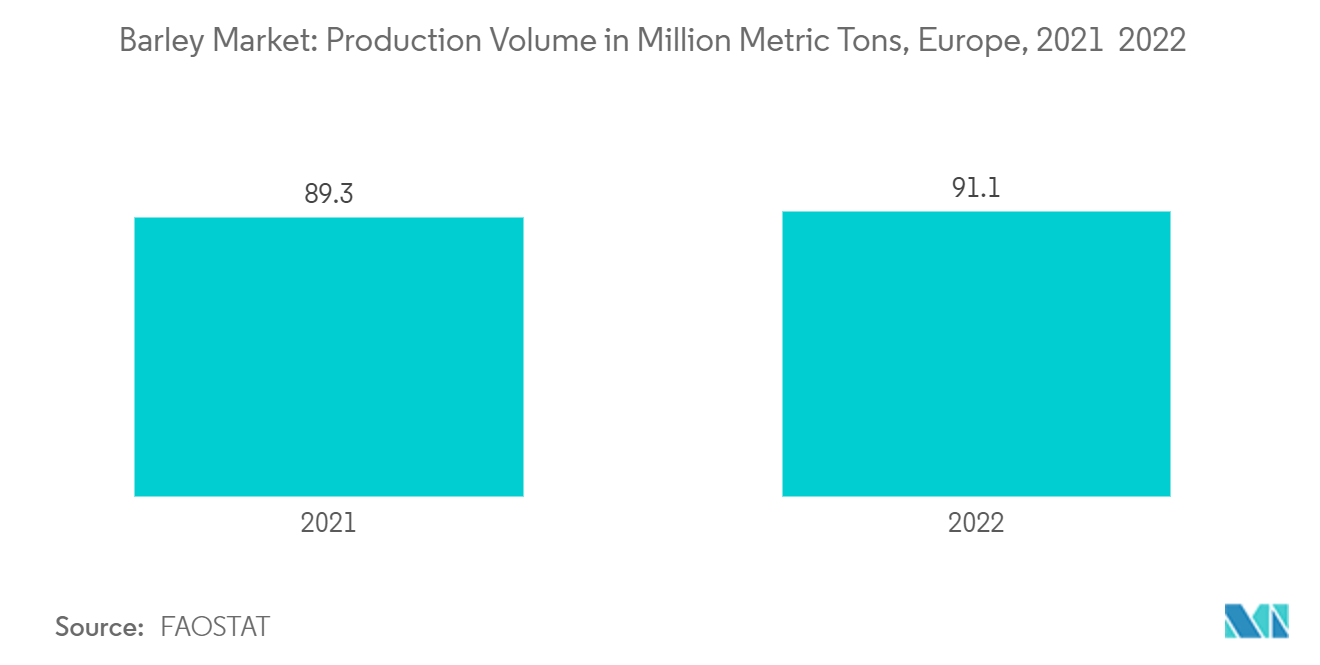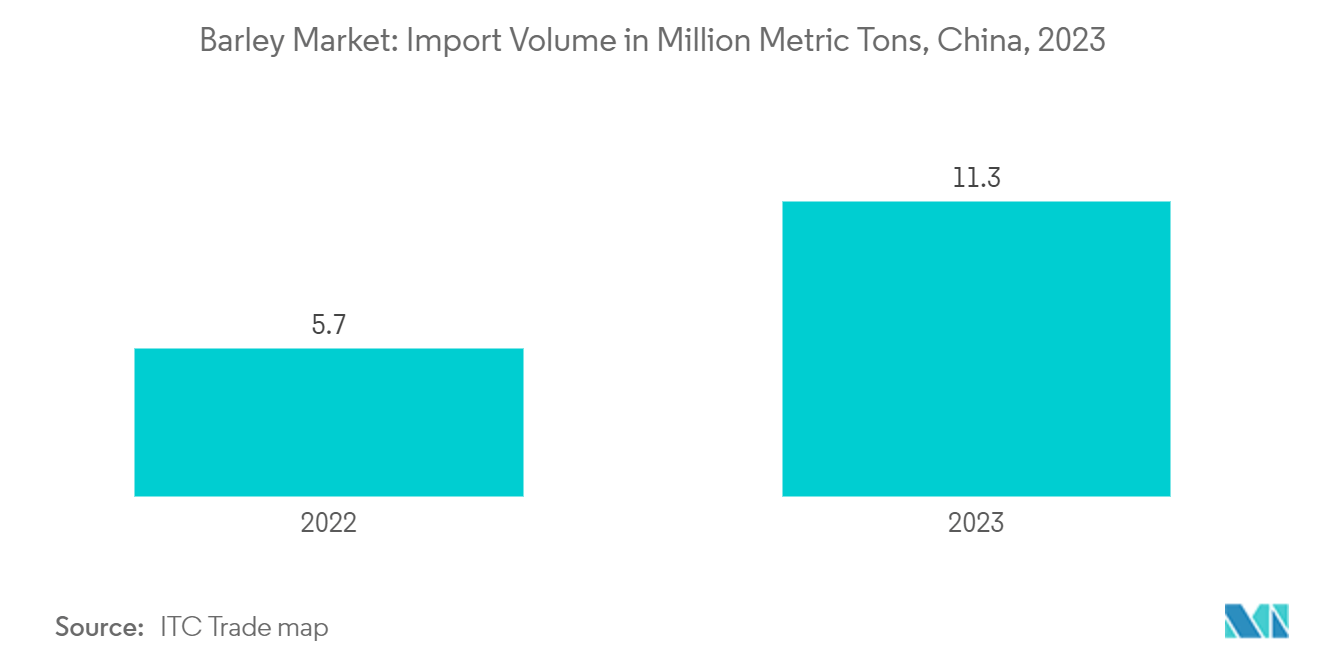Market Trends of Barley Industry
Europe Dominates Global Barley Production
Europe stands as the world's leading barley producer, contributing 59% to global production. Key European producers encompass France, Germany, Spain, Denmark, Poland, Romania, Sweden, Hungary, Ireland, Finland, and Czechia. During the study period, production in the region surged, driven by rising local and export market demands. Data from FAOSTAT indicates that European barley production climbed from 89.3 million metric tons in 2021 to 91.1 million metric tons in 2022, bolstering market growth projections.
In 2023, France, Germany, and Russia emerged as top five global exporters, as per the ITC trade map, underscoring Europe's robust barley export capabilities and its consequent large-scale production. The local production is further amplified by the surging demand for barley as animal feed. Notably, in France, per capita meat consumption saw a slight uptick from 22.2 kg in 2021 to 22.3 kg in 2022. This incremental rise in meat consumption propels cattle production, subsequently heightening the demand for barley feed and reinforcing market growth.
Additionally, initiatives aimed at boosting production are catalyzing market expansion. A case in point is the 2023 EU-backed project, Best Crop, which aims to amplify barley production and forge new value chains for barley-derived products. This collaborative endeavor brings together 18 partners from seven EU countries and the UK, including plant breeding companies, straw processing firms, and academic plant scientists. Hence, with rising industrial applications, a strong export potential, and supportive initiatives, the market is poised for growth during the forecast period.

Asia Pacific Sees Surge in Barley Imports
The Asia Pacific region stands as the world's leading importer of barley. Demand for barley is on the rise across Asia-Pacific, spurred by its diverse applications in sectors like food, beverages, and animal feed. This demand is further bolstered by the burgeoning development of barley-based beverages in the region. For example, in India, National Food and Beverages, a key FMCG importer of Japanese and Korean goods, markets Barley Tea under its brand "House," emphasizing its tea is made from a roasted barley grain infusion.
Additionally, Asia's expanding livestock population intensifies the demand for barley as animal feed. The US Department of Agriculture highlighted in 2023 that India's cattle inventory stood at around 308 million. While the global cattle count surpassed one billion, India topped the list, followed by Brazil, China, and the U.S. This growing livestock count, paired with barley's rising role in animal feed, accentuates the surging demand for barley in Asia. Notably, Feedipedia - Animal Feed Resources Information System indicates that livestock feeding accounts for roughly 85% of barley production.
Data from ITC Trademap shows that in 2023, China's barley imports jumped to nearly 11.3 million metric tons, a significant rise from 5.7 million metric tons. In another instance, data from the Observatory of Economic Complexity reveals that in 2022, India, with imports worth USD 106 million, ranked as the 25th largest barley importer globally. In a strategic move, Japan's Ministry of Agriculture, Forestry and Fisheries (MAFF) announced in October 2024 its intention to import 25,000 metric tons of feed barley by 2025. Such surging demand and proactive import strategies from various nations underscore the Asia-Pacific region's pivotal role in the barley market, suggesting robust growth during the forecast period.


